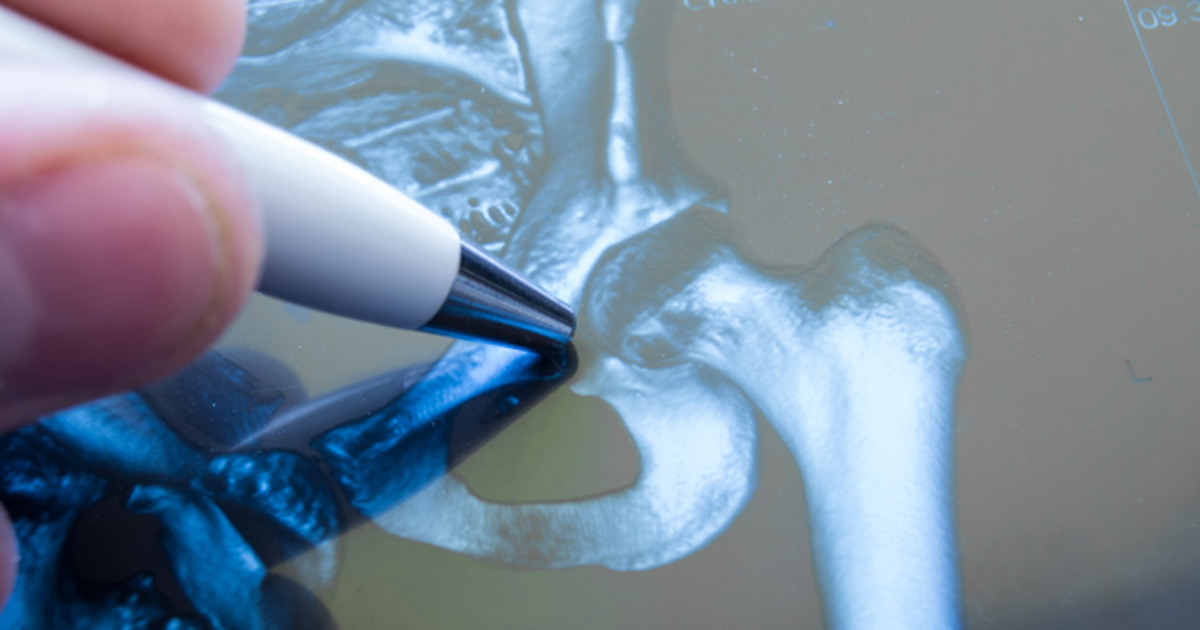Mixed-meal test reveals postprandial bone turnover suppression in abdominal obesity

Adults with abdominal obesity who participated in a mixed-meal tolerance test exhibited an acute postprandial suppression of bone turnover markers compared with the response after an oral glucose tolerance test, according to findings published in Bone.
“Type 2 diabetes is associated with low bone turnover and increased fracture risk despite increased bone mineral density,” Rasmus Fuglsang-Nielsen, MD, PhD, a resident in the department of endocrinology and internal medicine at Aarhus University Hospital and a postdoctoral fellow at the Steno Diabetes Center Aarhus at the University of Aarhus, Denmark, told Healio. “The mode of action is poorly understood but seems to relate to fragile bone structure. The development of insulin resistance in abdominal obesity precedes overt type 2 diabetes. Our study suggests that insulin resistance may be of key essence in the suppression of bone turnover. Improving insulin sensitivity by exercise or weight loss may not only benefit glycemic control, but may additionally benefit the physical properties of bone tissue in abdominal obesity and type 2 diabetes.”
Fuglsang-Nielsen and colleagues analyzed data from 64 adults aged at least 40 years with abdominal obesity but without diabetes or osteoporosis, participating in the MERITS study, a randomized intervention study assessing the long-term effect of whey protein and dietary wheat fiber on postprandial lipemia (mean age, 64 years; 33 women; mean BMI, 29.3 kg/m²). After 10 hours of fasting, participants underwent a standard 75-g OGTT, followed by a mixed-meal tolerance test 1 week later (1,130 kcal). Researchers measured circulating C-terminal telopeptide of type 1 collagen (CTX), procollagen type 1 N-terminal propeptide (P1NP) and parathyroid hormone on both days at 0, 30 and 90 minutes to compare the two interventions, and they assessed glucose and insulin levels to determine level of insulin resistance.

Bone turnover changes
After 30 minutes, all bone markers were reduced after the OGTT and the meal (P < .001). At 90 minutes, all bone markers differed between interventions (P < .001) in favor of a more pronounced suppression with the meal compared with OGTT.
“At 90 minutes after both interventions, all bone markers remained suppressed compared with baseline (P < .001),” the researchers wrote.
Researchers observed that parathyroid hormone reached nadir after 30 minutes and then began ascending. CTX was still declining at 90 minutes, as was P1NP following the meal; however, during the OGTT, P1NP “evened out” between 30 and 90 minutes (P = .09).
“From baseline to 90 minutes, P1NP was reduced by 5.1% by OGTT and 9.9% by meal,” the researchers wrote. “CTX was reduced 41.7% by OGTT and 49.7% by meal.”
The researchers noted that the study did not include a control group; therefore, they could not exclude that the observed change in CTX is caused in part by its natural rhythm.
“Although, a prior study from our department found a 28% reduction after 3 hours in CTX in a fasting control group,” the researchers wrote. “This study was performed at exactly the same time of day as the present study but in different subjects. In the present study, we found a reduction of more than 50% in CTX, which is similar to reported meal responses. P1NP appears to show no kind of circadian rhythm.”
Calcium, gut hormone changes
Calcium levels were similar after the OGTT and meal test. Glucose-dependent insulinotropic polypeptide (GIP) immediately increased after both interventions; however, researchers observed a larger response after the meal at 30 and 90 minutes compared with the OGTT. Glucagon-like peptide-2 (GLP-2) levels, which also increased immediately after the OGTT, peaked after 30 minutes and declined after.
“The increase was larger than following the meal, although baseline values were slightly higher as well,” the researchers wrote. “The meal induced a continuous rise in GLP-2 after 90 minutes, at which point GLP-2 was higher than following the OGTT.”
Fasting P1NP was inversely associated with insulin resistance, and the meal-induced suppression of P1NP — but not CTX or parathyroid hormone — was also inversely associated with level of insulin resistance.
“Bone turnover markers are suppressed by nutrient intake, independent of sex and seemingly prompted by a reduction in PTH,” Fuglsang-Nielsen said. “Low bone turnover appears to associate with the development of insulin resistance in abdominal obesity.”
Fuglsang-Nielsen said long-term clinical trials are needed to examine whether reverting insulin resistance in adults with type 2 diabetes can increase bone turnover and subsequently improve bone quality and reduce fracture risk. – by Regina Schaffer
For more information:
Rasmus Fuglsang-Nielsen, MD, PhD, can be reached at the Department of Endocrinology and Internal Medicine, Aarhus University Hospital, Palle Juul-Jensens Blvd. 99, 8200 Aarhus N., Denmark; email: rasmusfuglsang@gmail.com.
Disclosures: Arla Foods Ingredients Group provided powders of whey protein and maltodextrin. Lantmännen provided wheat bran and cereal products. DuPont Nutrition Biosciences performed the enzymatic treatment of the wheat bran.
